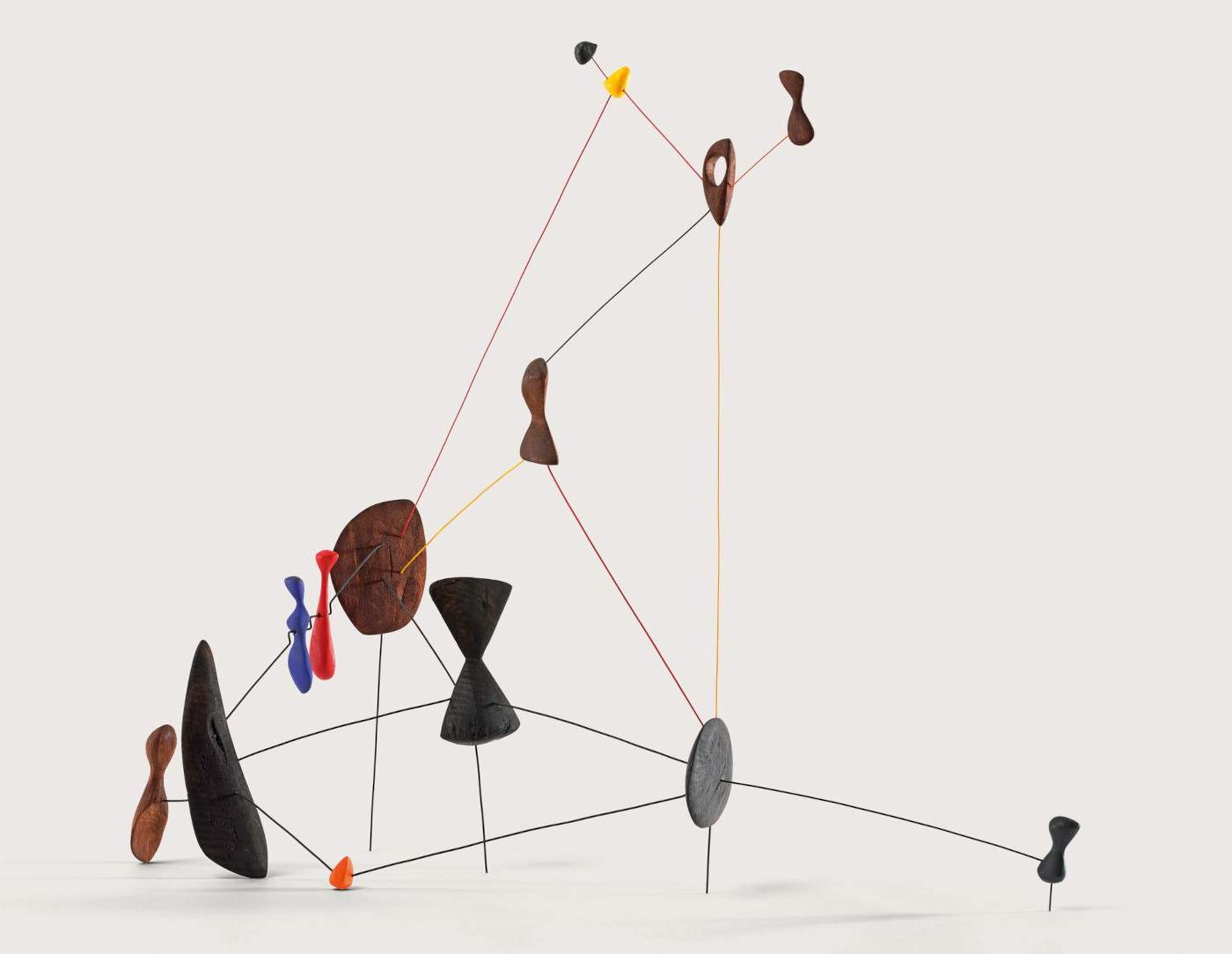In Switzerland, the MASI in Lugano presents a major monographic exhibition dedicated to Alexander Calder
MASI - Museo d’arte della Svizzera italiana, in Lugano, Switzerland, presents from May 5 to October 6, 2024, the exhibition Calder. Sculpting Time curated by Carmen Giménez and Ana Mingot Comenge. This is the most comprehensive monographic exhibition dedicated to Alexander Calder (Lawnton, 1898 - New York City, 1976) by a Swiss public institution in the last fifty years. By introducing movement into sculpture, Calder extended this medium beyond the visual into the temporal dimension. Drawing from major international public and private collections, including the Calder Foundation in New York from which a large body of work is drawn, the exhibition presents more than thirty of the artist’s masterpieces made between 1931 and 1960.
The exhibition aims to explore the profound and transformative impact of this revolutionary artist, outlining his development of a formal and sculptural language characterized by unprecedented innovation during the 1930s and 1940s. The exhibition will also feature a selection of constellations, a term proposed by Marcel Duchamp and James Johnson Sweeney for the artist’s sculptures made of wood and wire in 1943. Calder became part of the Parisian avant-garde shortly after moving to the French capital in 1926, and by 1930 the artist’s work shifted sharply toward the abstract. The exhibition marks this important juncture in the artist’s production with Calder’s first nonobjective sculptures, which he described as densités, sphériques, arcs, and mouvements arrêtés.
One of the artist’s most important innovations was that he incorporated movement into his compositions, thus introducing the temporal dimension. His mobiles, a term coined by Duchamp to describe these works, are kinetic sculptures whose ever-changing compositions are activated by the conditions of their environment. The Lugano exhibition presents one of the most important mobiles, Eucalyptus (1940). The sculpture made its debut in Calder’s 1940 exhibition at the Pierre Matisse Gallery in New York and was subsequently included in almost every major exhibition mounted during the artist’s career. The exhibition also includes other mobiles such as Arc of Petals (1941) and Red Lily Pads (1956), displayed in the last room, in front of a large window that offers a striking view of the lake and surrounding landscape. These works respond to every slightest change in air and light, vibrating in the unpredictability of time and its different moments.
Also on view are Calder’s stabiles, a term coined by Jean Arp for the artist’s static works in response to Duchamp, which explore implied movement instead. Untitled (circa 1940) and Black Mushrooms (1957) make clear the spectacular variations in scale of these works, from smaller to larger sizes. Due to the shortage of metal sheets during World War II, in 1943 Calder began a new series of abstract sculptures made of wire and wood, hung on the wall at unexpected heights. Sweeney and Duchamp, who curated Calder’s 1943 retrospective at the Museum of Modern Art in New York, proposed the term constellation for these sculptures. The exhibition will be accompanied by a catalog published by Silvana Editoriale in three separate editions (Italian, English and German), with an essay by Carmen Giménez and Ana Mingot Comenge and a selection of historical texts. The exhibition is made possible thanks to Fondazione Favorita.
“Calder created metallic organisms that possess the qualities of lightness and variety in subtle biomorphic forms that are at once resistant and fragile, dynamic and aesthetic, solid and hypersensitive,” explain the exhibition curators. “Moving freely and interacting with his surroundings, he seems to shape the air; he is constantly changing, playing with time. ”Calder’s legacy endures not only in the physical presence of his works, but also in the profound impact of his work, which changed the way we perceive and interact with sculpture. His contribution to art history extends far beyond the innovative use of materials and the employment of new techniques, capturing the subtle essence of fleeting moments. Confronting this temporal dimension is the goal of this exhibition," they conclude.
For info: https://www.masilugano.ch/masi/home.html
Image: Alexander Calder, Constellation (1943; wood, wire and paint, 83.8 x 91.4 x 35.6 cm; New York, Calder Foundation. Photo by Tom Powel Imaging © Calder Foundation, New York. Courtesy of Calder Foundation, New York Art Resource, New York © 2024 Calder Foundation, New York / Artists Rights Society (ARS), New York
 |
| In Switzerland, the MASI in Lugano presents a major monographic exhibition dedicated to Alexander Calder |
Warning: the translation into English of the original Italian article was created using automatic tools. We undertake to review all articles, but we do not guarantee the total absence of inaccuracies in the translation due to the program. You can find the original by clicking on the ITA button. If you find any mistake,please contact us.




























